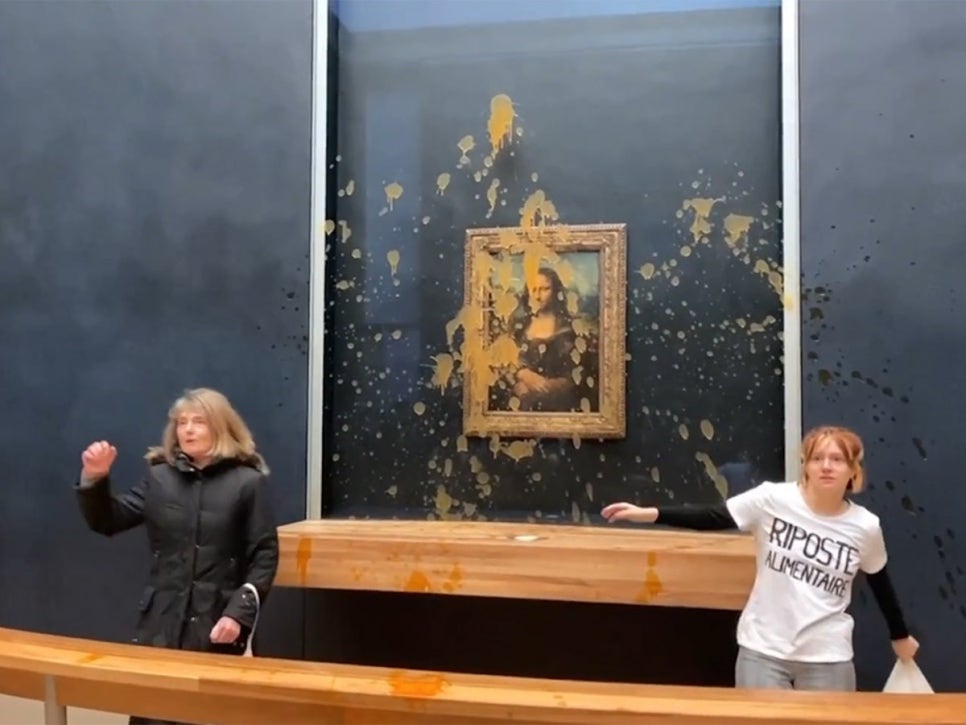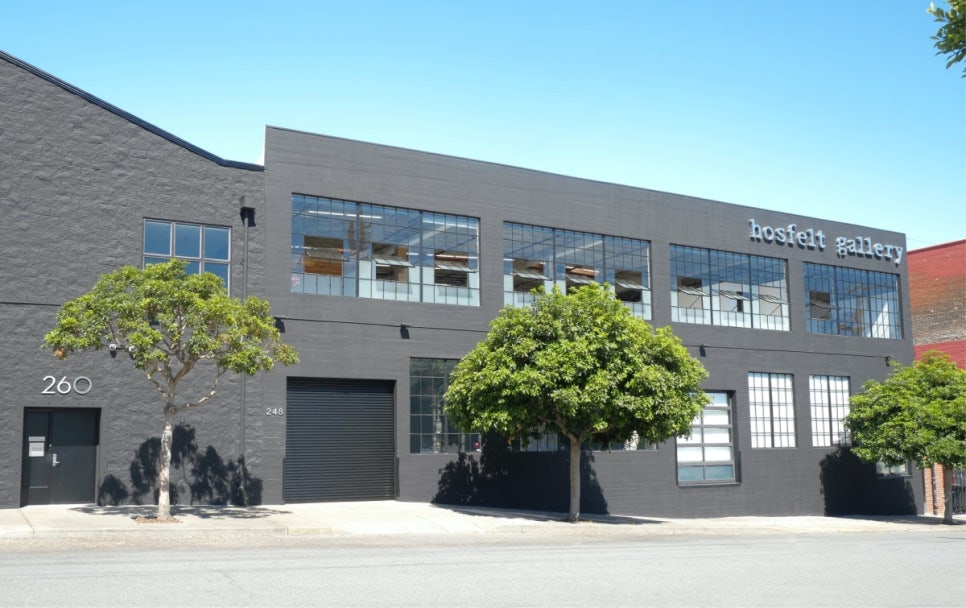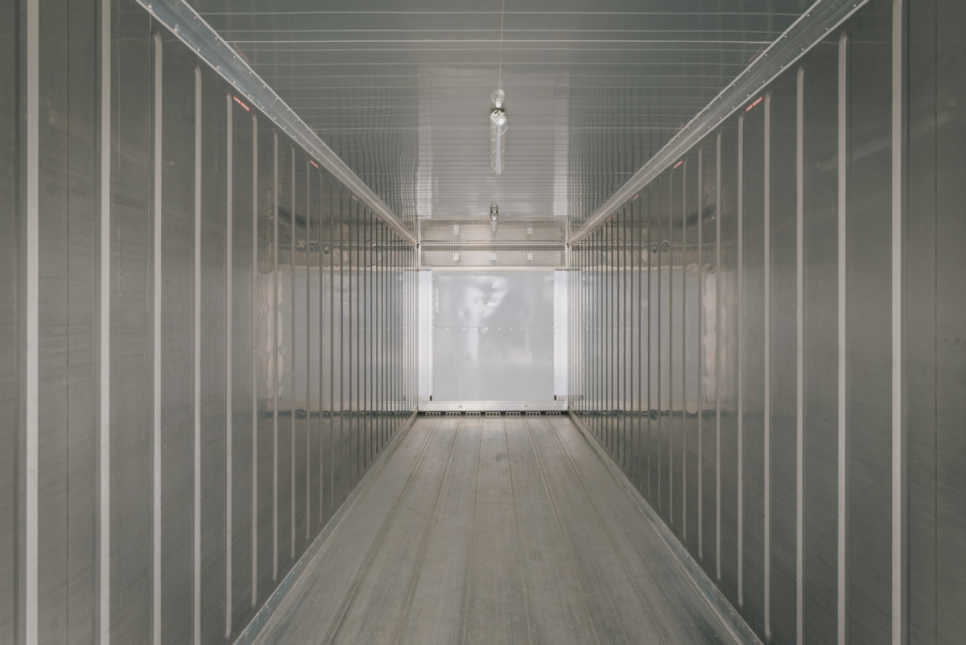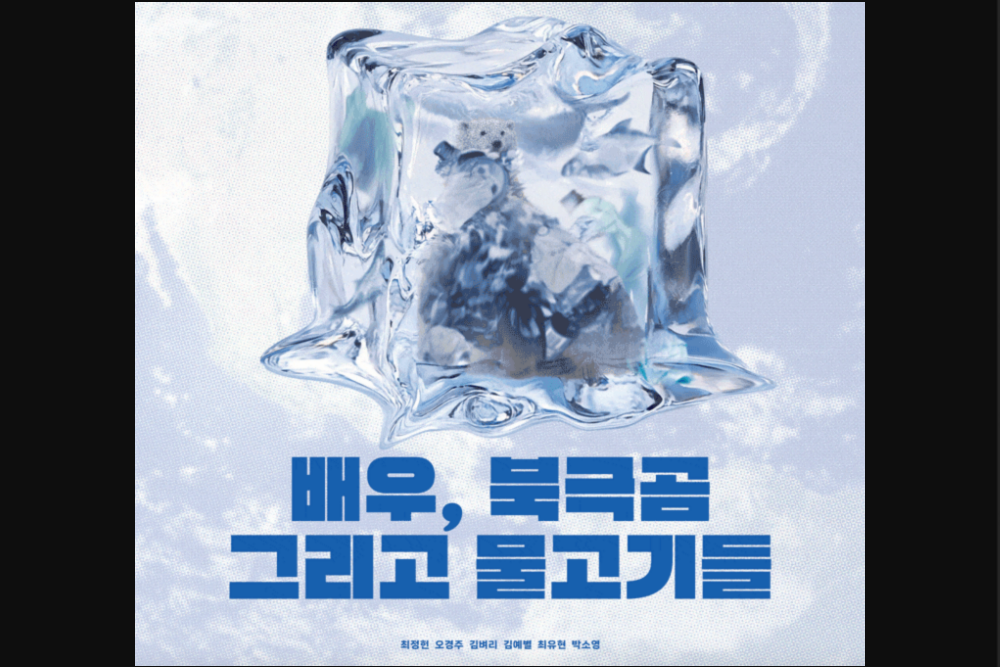It’s the era of the Mona Lisa’s suffering. She has been hit with whipped cream cake and doused with pumpkin soup. “What’s more important? Art, or humanity’s right to sustainable food?” The environmental activists behind the food attacks shouted that people shouldn’t leisurely admire paintings but instead think about our ailing planet.

Recently, attacks on art museums have become increasingly frequent. Even Van Gogh’s iconic work, Sunflowers, was not spared from a tomato soup attack. But why museums, and why choose masterpieces like the Mona Lisa and Sunflowers out of so many artworks? Most believe that environmental activists selected these well-known masterpieces to capture global attention and effectively convey their message through protest performances. After all, the Mona Lisa is one of the most famous paintings, attracting ten million visitors each year. The destructive spectacle of plain soup carelessly splattered on such a great work was so sensational that it was widely reported by media outlets around the world.
Of course, neither the Mona Lisa nor Sunflowers are to blame. The recent protest performances were not meant to scold the art world but to urge people to pay more attention to environmental issues. However, in this era of climate crisis, the art world cannot stand idly by. The industry is already developing and implementing various experiments and initiatives to achieve carbon neutrality in all aspects—from creating artworks to transporting and exhibiting them.
People and artworks alike: “Please don’t keep putting them on airplanes~”
The art world is busy throughout the year. Not to mention major events like Frieze, Art Basel, and FIAC, a variety of art fairs are held annually at regional levels all around the world. There are also biennales in cities such as Venice, New York, and São Paulo. Museums around the world—like the Louvre in France and the National Gallery in the UK—host permanent collections as well as themed special exhibitions, and small galleries do the same. Numerous people—including artists, exhibition and fair organizers, collectors, and visitors—travel to attend these events. Artworks are also flown from place to place. Both people and art pieces take many flights.

The greatest amount of carbon emissions in the art exhibition field comes from travel and transportation. While art knows no borders, the art exhibition sector is especially globalized more than any other field. This leads to frequent cross-country movement of both people and artworks. When the travel distance is long or the destination is an island with limited accessibility, flying is realistically the only viable mode of transport. Moreover, in an age where time is precious, wealthy and busy art lovers rarely consider other means of travel. Some may attempt adventurous alternatives, like a Swedish artist who took the Trans-Siberian Railway to Tokyo, but such bold experiments require a strong artistic spirit to undertake. This ‘rare’ artist, who spent two weeks on the train, emphasized a shift in perspective by viewing the train as a “mobile studio.” In other words, giving up flying in favor of low-carbon options like trains, ships, or buses is far from easy.
The Hosfelt Gallery in San Francisco has tried various innovations to reduce travel by collectors and staff. First, they established a virtual studio for curators and collectors living overseas. They also cut back on international business trips for their staff. The most surprising discovery was that they could accomplish the same work without flying as frequently. By planning “when” and “how” to travel more strategically and smartly, what used to require three trips could be condensed into just one. As the gallery director said, completely giving up flying is impossible, but even small efforts can make a significant impact.

They also introduced an incentive program to change employees’ commuting habits. Employees who commuted by public transportation for 30 days were rewarded with one paid day off. The incentive program proved successful, with more than half of the employees who previously commuted by car now using public transit at least three days a week.
Artwork transportation is also a major source of greenhouse gas emissions in the art world. Artworks are sensitive to changes in humidity and temperature and require careful handling during transport, making air freight the default method. However, air transport emits carbon at rates more than 10 times higher than land transport and over 60 times higher than sea freight. Recently, the global art auction house Christie’s partnered with a specialized art transport company to introduce sea freight services on the London–New York and London–Hong Kong routes. This company developed special containers equipped with humidity and temperature control, shock monitoring systems, and refrigeration to safely transport valuable artworks. Although sea freight takes 20 days from London to New York and 40 days from London to Hong Kong, it reduces greenhouse gas emissions by 80% compared to air transport.

Berlin’s Haverkampf Leistenschneider Gallery found a breakthrough in carbon reduction through network collaboration with other galleries. To participate in overseas art fairs, Haverkampf Leistenschneider teamed up with other Berlin galleries. Staff carpooled, and artworks were consolidated and shipped together in a single vehicle. By pooling people and artworks, both costs and carbon emissions were reduced. Haverkampf Leistenschneider set a goal to conduct all international transportation by sea or land only by 2028.
Reducing Greenhouse Gas Emissions in Exhibition Spaces Is a Battle of Ideas
Exhibition spaces, by nature of being places frequented by people, require a consistently comfortable indoor temperature, which results in high energy consumption. There are two main ways to reduce carbon emissions in the energy sector: switching to renewable energy or improving energy efficiency to reduce consumption. At Frieze London in 2019, greenhouse gas emissions were reduced by nearly 90% by using recycled fuel made from waste oil instead of fossil fuels. The Midlands Arts Centre in Birmingham, UK, implemented both approaches: they installed solar panels on the building’s roof to supply renewable electricity and simultaneously improved energy efficiency by installing high-efficiency boilers, replacing light bulbs with LEDs, and introducing a building energy management system. As a result, the center reduced energy-related carbon emissions by 22% in 2021 compared to 2019.

There are many more ways to reduce greenhouse gas emissions in exhibition spaces if you look for them. Frieze London reduced waste and contributed to resource circulation by reusing tents, booths, and carpets from previous exhibitions, while Paris’s FIAC reused partition wall structures previously used at Paris Photo. Exhibition leaflets can be printed in black and white using soy ink on recycled paper, and audio guides should ideally be devices with replaceable batteries and components that are recyclable at the end of their life. And if, after all that, you still can’t come up with a sharp idea to cut emissions at exhibitions, another option is to set aside 1–2% of annual revenue to create an internal climate fund. This fund could support carbon-neutrality campaigns or projects within the art world. Ultimately, reducing greenhouse gas emissions in exhibition spaces requires collaboration and joint efforts with various stakeholders across the entire supply chain in order to move toward carbon neutrality.
There is no such thing as idle art in this world
As you quietly gaze at the Mona Lisa splattered with pumpkin soup, you might start to think that perhaps the environmental activists who threw the soup don’t actually like the Mona Lisa. In fact, that seems to be the case—any true art lover wouldn’t treat the Mona Lisa that way. If so, the essence of the Mona Lisa soup attack may lie not so much in a warning about the environment, but rather in the activists’ disregard for art itself.
Sasha and Marie-Juliette, who carried out the “soup attack,” criticized the “idle” people who love art, but art is not something done out of idleness. Throughout human history, art has always been present because what sustains humanity is not just food, clothing, and shelter, but something more—hope, forgiveness, faith, and the like. Art gives life to these. It is how Homo Ludens, the playing human, lives.
▶ This article is a contribution to the webzine published by the Korea National Oil Corporation.
https://www.knoc.co.kr/upload/EBOOK/sabo/200/sub/sub2_4.html













